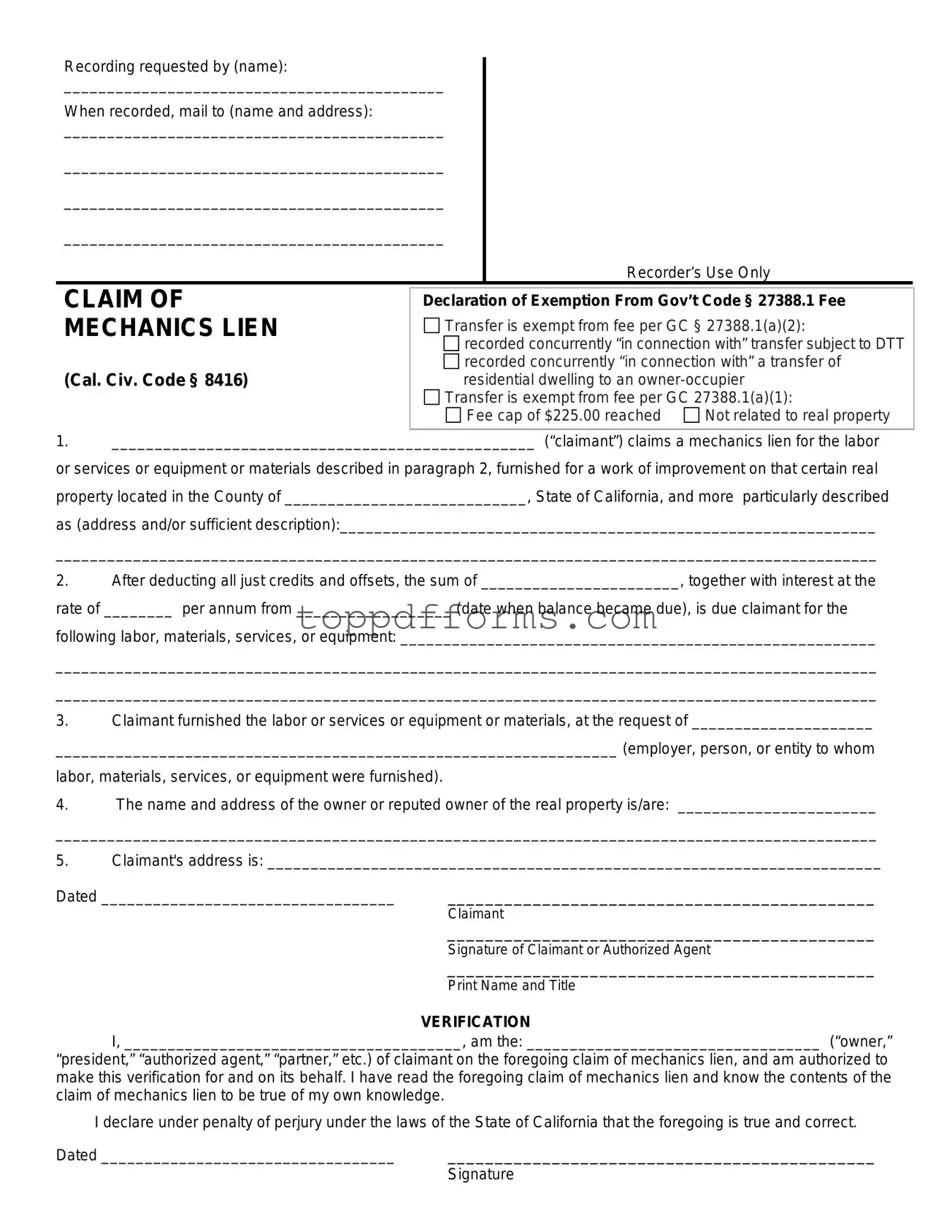What is a Mechanics Lien in California?
A Mechanics Lien is a legal claim that a contractor, subcontractor, or supplier can file against a property when they have not been paid for work performed or materials provided. This lien serves as a way to secure payment by placing a hold on the property. If the debt remains unpaid, the lien can lead to foreclosure, allowing the claimant to recover the owed amount through the sale of the property. It’s an important tool for those in the construction industry to protect their rights and ensure they receive fair compensation for their services.
Who can file a Mechanics Lien in California?
In California, various parties involved in construction can file a Mechanics Lien. This includes general contractors, subcontractors, laborers, and suppliers of materials. Essentially, anyone who contributes to the construction, alteration, or repair of a property and has not been compensated can pursue this legal remedy. However, it’s crucial to note that certain requirements must be met, such as providing proper notice to the property owner before filing the lien.
What are the steps to file a Mechanics Lien in California?
Filing a Mechanics Lien involves several steps. First, ensure that you have the right to file by confirming your role in the project and that payment has not been received. Next, prepare the Mechanics Lien form, which requires specific information about the property, the work done, and the amount owed. After completing the form, it must be filed with the county recorder's office in the county where the property is located. Finally, you must serve a copy of the filed lien to the property owner and any other relevant parties. It’s essential to adhere to the timelines and requirements set forth by California law to ensure the lien is valid.
What happens after a Mechanics Lien is filed?
Once a Mechanics Lien is filed, it becomes a public record, and the property owner is notified. This lien can affect the property owner’s ability to sell or refinance the property until the debt is resolved. The property owner may choose to pay the owed amount to have the lien released, or they may dispute the claim. If the matter is not settled, the lien claimant may initiate a legal action to enforce the lien. This process can lead to a court hearing, where a judge will determine the validity of the lien and whether the claimant is entitled to payment. It’s a serious step that underscores the importance of resolving payment disputes promptly.
